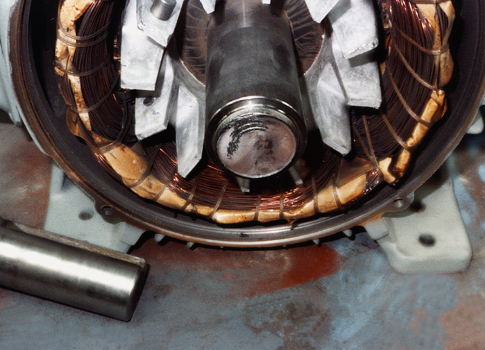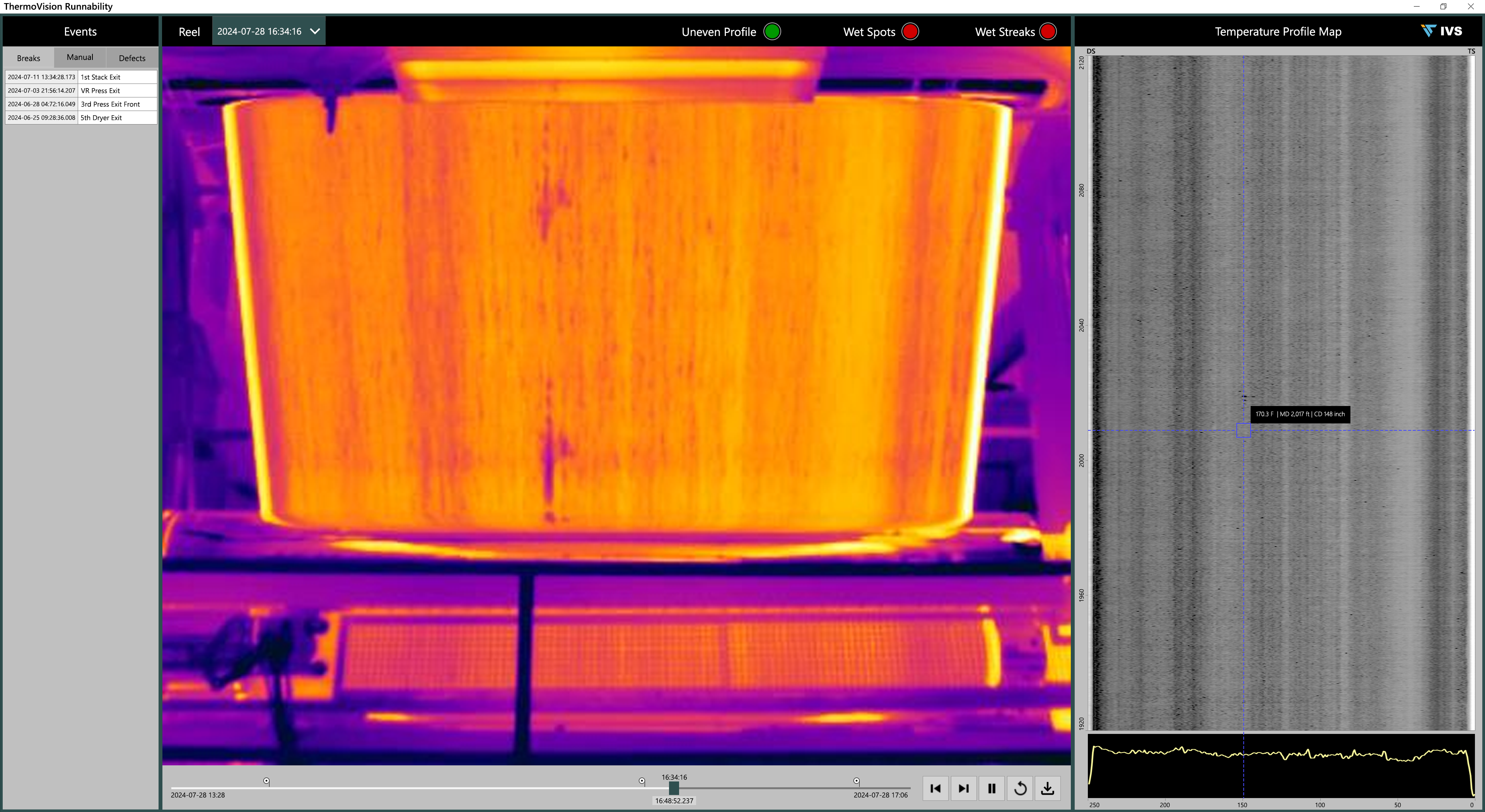A rudimentary understanding of how shaft sizes are determined can be helpful to anyone who works with pumps, fans, elevators or any other motor-driven equipment. Engineers often design using an ample safety factor, but consider modifying a shaft only with good engineering support. The greater the consequence of failure, the more generous the safety factor should be.

Have you ever wondered why various types of electric motors with the same horsepower/kilowatt ratings have different shaft diameters, or why some pump shafts are so much smaller than the shafts of the motors that drive them? And what about those hollow-shaft motors? A rudimentary understanding of how shaft sizes are determined can be helpful to anyone who works with pumps, fans, elevators or any other motor-driven equipment.
Bigger is better—or at least used to be
Owing partly to tradition, the shafts of electric motors are often larger than those of the equipment they drive. Engineers were very conservative a century ago when electric motors first came into widespread industrial use, so they typically designed in a sizable margin of error. Today’s engineers haven’t changed much in this respect. For example, standard NEMA frame dimensions, which have been revised only once since 1950, still specify much larger shaft sizes than commonly accepted principles of mechanical engineering would require.
Shaft design basics
Shaft size is dictated by torque, not horsepower. But changes in horsepower and speed (rpm) affect torque, as the following equation shows:
Torque (lb-ft) = hp x 5,252/rpm
Accordingly, an increase in horsepower would require more torque, as would a decrease in rpm. For example, a 100 hp motor designed for 900 rpm would require twice as much torque as a 100 hp motor designed for 1,800 rpm. Each shaft must be sized for the torsional load it is expected to carry.
Two basic approaches are used to determine the required minimum shaft size for motors, both of which yield conservative results. One method calls for making the shaft large enough (and therefore strong enough) to drive the specified load without breaking. Mechanical engineers define this as the ability to transmit the required torque without exceeding the maximum allowable torsional shearing stress of the shaft material. In practice, this usually means that the minimum shaft diameter can withstand at least two times the rated torque of the motor.
Another way to design a shaft is to calculate the minimum diameter needed to control torsional deflection (twisting) during service. To engineers, this means the allowable twisting moment, or torque, is a function of the allowable torsional shearing stress (in psi or kPa) and the polar section modulus (a function of the cross-sectional area of the shaft).
Machinery’s Handbook provides the following equations for determining minimum shaft sizes using both design approaches: resistance of torsional deflection and transmission of torque. Both sets of equations are based on standard values for steel, with allowable stresses of 4,000 psi (2.86 kg/mm2) for power-transmitting shafts, and 6,000 psi (4.29 kg/mm2) for line-shafts with sheaves (sometimes called pulleys). Some of the equations also are specific to keyed or non-keyed shafts, which is handy for pump users who need to know how to calculate both keyed and unkeyed shafts.
Transmission of torque approach
Most motor shafts are keyed, which increases the shear stress exerted on the shaft. Considering this, motor shaft designs typically use no more than 75% of the maximum recommended stress for a non-keyed shaft. This is another reason why the shafts of electric motors are often larger than the pump shafts they drive.
> > See the following pages for Equations 3-5 and Examples 1-4.
Example 1
Consider a 200 hp (150 kW), 1,800 rpm motor. For a direct-couple application, the standard frame size is 445TS, with a (keyed) shaft diameter of 2.375 in. (60 mm). Using equation [1], the minimum shaft size would be:
Or, in metric units:
To see how much of a safety factor is built into the above equations, substitute 400 hp for the 200 hp power rating.
Since the calculated shaft diameter for a 200 hp motor is designed to withstand twice the rated torque, the shaft diameter of 2.371 in. is at the absolute minimum for the 400 hp rating.
Resistance to twisting method
The other way to calculate minimum shaft size for a motor is to set a limit on the amount of torsional deflection (twisting) that may occur. Resistance to torsional stress is directly proportional to shaft size: the larger the diameter, the greater the resistance to twisting.
A rule of thumb with this method is that the shaft must be large enough that it will not deflect more than 1 degree in a length of 20 times its diameter. To calculate the minimum shaft size to meet this specification, use the following equation:
Example 2
For the 200 hp (150 kW), 1,800 rpm motor from Example 1, the minimum shaft size to limit torsional deflection would be:
Or, in metric units:
The minimum shaft diameters calculated by the torque transmission and torsional deflection methods are essentially the same for Examples 1 and 2. Still, a good approach is to calculate the size both ways, and then use the larger value as the absolute minimum.
> > See the following page for Hollow-Shaft Designs, Equation 5, and Examples 3-4.
Hollow-shaft designs
Direct-coupled loads exert a twisting force (torsion) on the shaft, placing the greatest strain near the surface or radius and very little on the inside portion. That makes hollow-shaft designs practical for vertical motors. These designs allow the pump shaft to pass through the hollow motor shaft, which simplifies the coupling process for pump shafts that must support the heavy water column associated with a deep well.
The calculations for shaft diameter are not quite as straightforward for a vertical hollow-shaft motor. Two variables—the outside and inside diameters of the hollow shaft—are not standardized, making it impossible to simplify the calculation with a ratio. For this reason, it is easier to demonstrate if a specific hollow-shaft is sufficient for a given power rating.
Example 3
A 200 hp (150 kW), 1,800 rpm hollow-shaft motor has an outside shaft diameter of 3 in. (76 mm) and inside diameter of 2 in. (51 mm). To determine if this shaft size is sufficient to transmit the required torque, solve the following equation for P:
For this example, P must be greater than 200 hp to ensure that the shaft will be large enough to handle the torque of the motor.
Theoretically, this shaft is capable of transmitting 1,700 hp, so it is more than sufficient for the 200 hp requirement.
Example 4
The amount of torque that a hollow shaft can transmit depends on thickness of the wall between its inside and outside diameters. A thinner wall cannot handle as much torque as a thicker one. The 3-in. shaft in Example 3 was capable of transmitting 1,700 hp and had a wall that was ½ in. thick: (3 in. – 2 in.) / 2 in. = ½ in. How much horsepower could a 3-in. shaft transmit if the wall were only ¼ in. thick?
The effect of a thinner wall is dramatic. The shaft with the 0.25-in. wall can carry less than 20% of the torque of the shaft with ½-in wall.
Summing up
Engineers tend to design using an ample safety factor, and older equipment in particular was over-designed by even today’s standards. Of course, that is one reason many of us appreciate older machinery. It was tough enough to withstand human errors like poor alignment.
In any case, keep in mind that adding a keyway to an existing shaft weakens the shaft. Likewise, increasing the bore diameter of a hollow-shaft reduces the torque capacity. Consider modifying a shaft only with good engineering support. Even then, remember that the greater the consequence of failure, the more generous the safety factor should be. After all, who wants to use an elevator that was designed and built with no safety factor?
Chuck Yung is a senior technical support specialist for the Electrical Apparatus Service Association (EASA).



